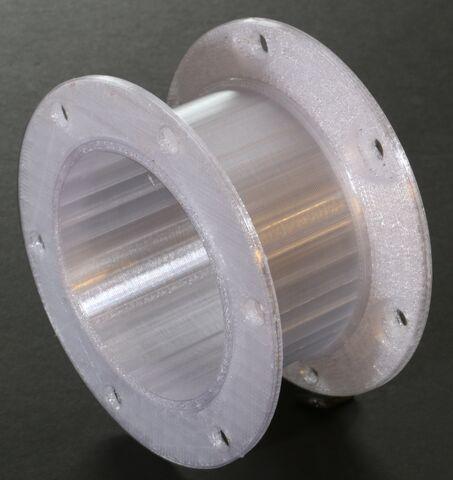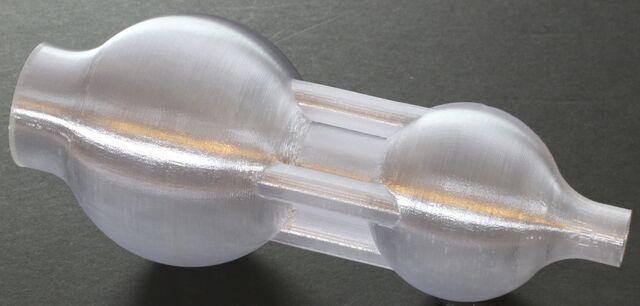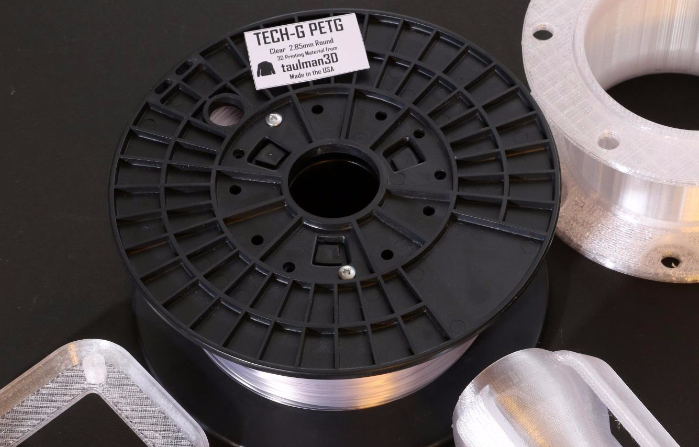New & Improved PETG: Taulman3D Releases TECH-G 3D Printing Filament with High Strength, Limited Elongation
 The world of materials for 3D printing has grown to be vast, like the growing worldwide catalog of transforming innovations we are now gifted with. And while there may be many different filaments and alternative sources to draw from, there are equally as many issues, concerns, and drawbacks specific to each project, printer, and user.
The world of materials for 3D printing has grown to be vast, like the growing worldwide catalog of transforming innovations we are now gifted with. And while there may be many different filaments and alternative sources to draw from, there are equally as many issues, concerns, and drawbacks specific to each project, printer, and user.
Companies like Taulman3D specialize in helping users to do something quite simple: make more 3D printed things–correctly. They supply a huge amount of information to us though along the way, and it’s always a highlight to see one of their new products popping up–which happens quite often in comparison to other manufacturers.
 Founded by Thomas Martzall, the filament manufacturing company is comprised of a team that knows their stuff when it comes to materials and chemicals, and they continue to strive toward new innovations and horizons in filaments–each possessing unique features that work for a variety of users seeking specific elements for their own requirements.
Founded by Thomas Martzall, the filament manufacturing company is comprised of a team that knows their stuff when it comes to materials and chemicals, and they continue to strive toward new innovations and horizons in filaments–each possessing unique features that work for a variety of users seeking specific elements for their own requirements.
Currently, Taulman is announcing the release of TECH-G, a PETG filament which is meant to offer even higher strength while providing limited elongation.
Gaining in popularity, PETG filaments are a modified version of the more simple PET, a nontoxic, thermoplastic polymer resin used in making clothes and products like containers. PETG filaments are an attractive and viable option because of their low melting temperature and both durability and flexibility in the finished state. A good alternative to either ABS or nylon, PETG normally offers transparency as well.
While PLA and ABS have been traditionally used, and especially by engineering firms for ‘initial form and fitness evaluations,’ the Taulman team was aware that many times the overall strength of those filaments was limiting the usefulness and potential of 3D models.
“In the case of PLA, it was the brittle nature of medium or larger parts that severely limited functional testing,” states the Taulman team. “With ABS, the limit was always tensile strength.”
TECH-G Specifications when 3D printed:
- Tensile strength – 5,900+ PSI
- Elongation – 3%
- IZOD Notch – 2.14 ft-lbf/inch
- Color – clear (colorless with no dyes added)
- Odors – none
- Transmission – 90%
- Print temperature – 235°C –240°C
 A clear, odorless virgin polymer provided in standard 1kg spools, TECH-G is available in both 1.75mm and 2.85mm sizes. Indeed almost as transparent as t-glase, which we’ve reported on earlier in the year, this is a material known as a co-polyester. The Taulman team points out several tips for use with TECH-G, such as:
A clear, odorless virgin polymer provided in standard 1kg spools, TECH-G is available in both 1.75mm and 2.85mm sizes. Indeed almost as transparent as t-glase, which we’ve reported on earlier in the year, this is a material known as a co-polyester. The Taulman team points out several tips for use with TECH-G, such as:
- Users will want to make use of lower fans when printing PLA polymers
- The best printing surface for a glass finish is to print on heated glass at 72°C
- For a quick release print bed, users should apply a 50% PVA and 50% water wipe to glass heated to 45°C
- Printing temperatures vary slightly with nozzle size, but the average is 238°C
- When printed too at too high a temperature, there will be bubbles in the printed thread and if too cold, the thread will appear cloudy
Earlier in the year, TECH-G was released into a testing phase, allowing users to try it and give Taulman feedback regarding its performance. Upon its release to the public, Taulman sees TECH-G as a new and easier material to use in 3D printing, offering greater tensile strength, which offers just the right amount of elongation to be used in functional testing. TECH-G is FDA compliant with CFR 177.1315.
Have you had an opportunity to test out this new filament? Let us know in the TECH-G forum thread on 3DPB.com.
Subscribe to Our Email Newsletter
Stay up-to-date on all the latest news from the 3D printing industry and receive information and offers from third party vendors.
Print Services
Upload your 3D Models and get them printed quickly and efficiently.
You May Also Like
3D Printing Financials: Xometry Cuts Losses, Grows Platform
Xometry (Nasdaq: XMTR) is entering 2025 with momentum. The company delivered record quarterly revenue and narrowed its losses, showing progress toward profitability. More importantly, for those watching the future of...
3D Printing News Briefs, May 7, 2025: Sales Partner, Seawalls, Ceramics, & More
We’ll take care of some business first in today’s 3D Printing News Briefs, as Meltio announced an official sales partner in Portugal, and Kind Designs received about $1 million in...
3D Printing Financials: Protolabs Reports 3D Printing Dip, But Metal 3D Orders Grow
Protolabs (NYSE: PRLB) kicked off 2025 with a mixed but steady performance. Revenue remained close to expectations, profits dipped slightly from last year, and the company was profitable despite ongoing...
Johns Hopkins University Researchers Develop HyFAM Technology
Two scientists from Johns Hopkins University, Nathan C. Brown and Jochen Mueller, have developed a hybrid manufacturing technology they call HyFam, or Hybrid Formative Additive Manufacturing. Their work on this technology...






























